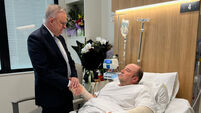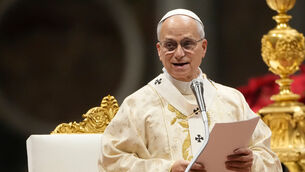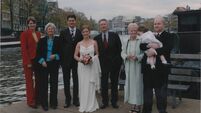One of separated Iranian twins dies
One of the Iranian conjoined twins separated during a major operation today has died, a hospital spokesman has confirmed.
Neurosurgeons finished separating 29-year-old twins Ladan and Laleh Bijani, who were joined at the head today.
The women were left in a critical condition by the dangerous procedure, a hospital spokesman said.
News of Ladan’s death came less than an hour after Kumar announced the twins had been separated, adding: “We should pray very hard for them.”
Kumar had warned that controlling the bleeding and moving the twins from a seated position onto separate beds would be the biggest challenge.
Remaining surgery for Laleh was expected to last at least another 24 hours as plastic surgeons covered her brain with tough, fibrous tissue taken from her thigh.
The team of doctors had to contend with unstable pressure levels inside the twins’ heads just before they uncoupled the brains and cut through the last bit of skull joining them, Kumar said.
Surgeons had separated the brains “millimetre by millimetre” Kumar said earlier.
“They have to be teased apart very slowly,” he said. “Cut. Teased apart. Cut. Teased apart. In the process, you encounter a lot of blood vessels and other tissues.”
Yesterday, five neurosurgeons completed one of the most dangerous steps in the surgery by re-routing a shared vein and successfully attaching a vein graft from Ladan Bijani’s thigh.
The shared vein, thick as a finger, drained blood from the twins’ brains to their hearts. Their bodies are otherwise distinct.
Re-routing the shared vein was considered one of the biggest obstacles in the surgery. German doctors told the twins in 1996 that the surgery was too dangerous, but the Singapore team benefited from technological advances.
The operation was complicated further when the team discovered that the pressure in the twins’ brains and circulatory system was fluctuating.
Dr Marc Mayberg, chairman of neurosurgery at the Cleveland Clinic in Ohio, said the pressure fluctuations could be fatal.
“If the pressure is due to the fact that there is insufficient drainage from this vein, in either cranium, that could be a life-threatening condition,” he said.
“If God wants us to live the rest of our lives as two separate, independent individuals, we will,” Ladan Bijani has said before the operation.
An international team of 28 doctors and about 100 medical assistants were enlisted for the surgery.
It was the first time surgeons had tried to separate adult craniopagus twins - siblings born joined at the head. The surgery has been performed successfully since 1952 on infants, whose brains can more easily recover.
The sisters were born into a poor family of 11 children in Firouzabad, southern Iran, but grew up in the capital Tehran under doctors’ care.
As girls they used to cheat on tests by whispering answers to each other, they said last month.
The government caught on and concluded it would be nearly impossible for them to compete individually in university entrance exams, so it granted them a scholarship to study law at Tehran University.
After surgery, the twins had hoped to move back to Iran and live together while Laleh pursued journalism and Ladan worked as a lawyer.













